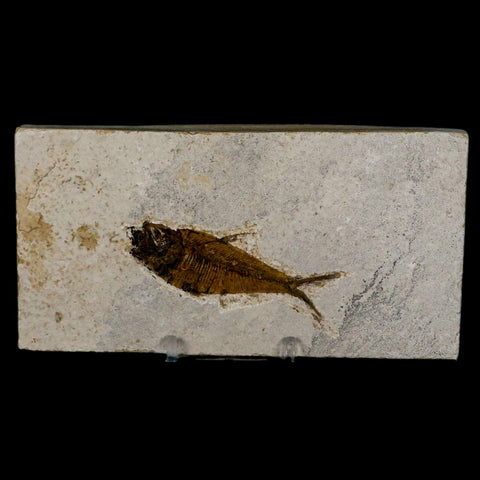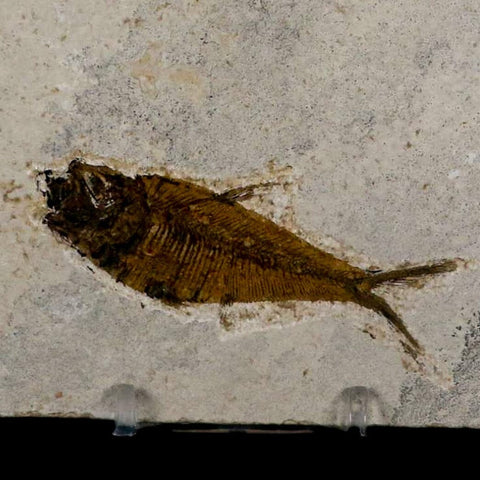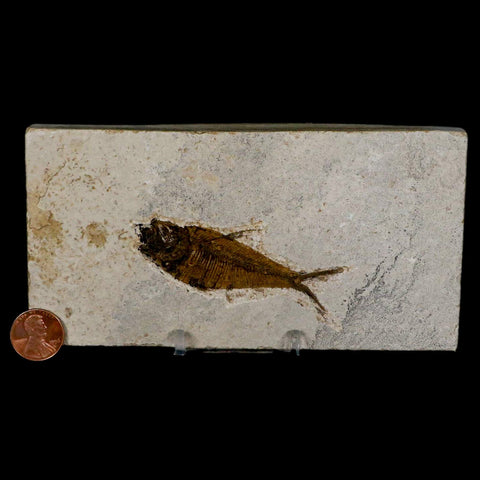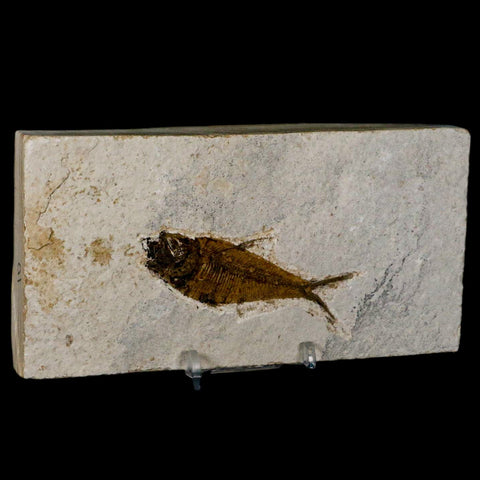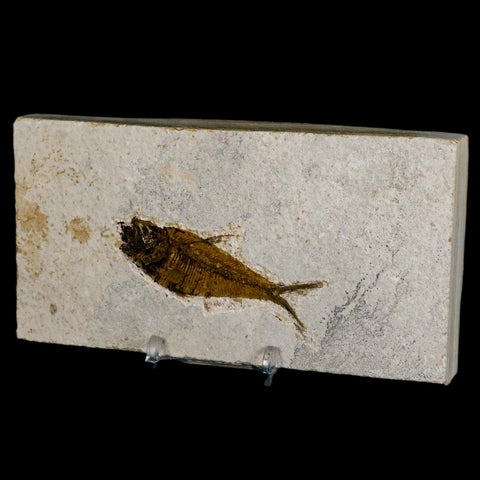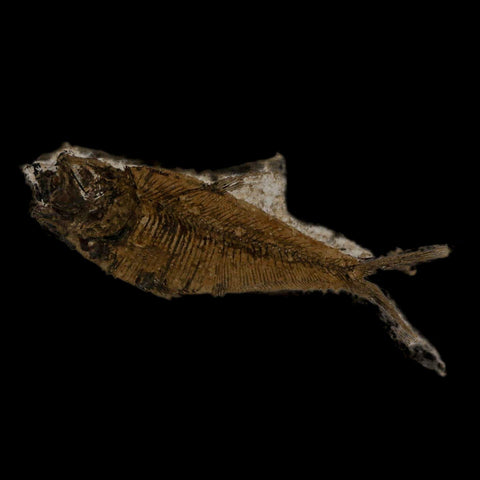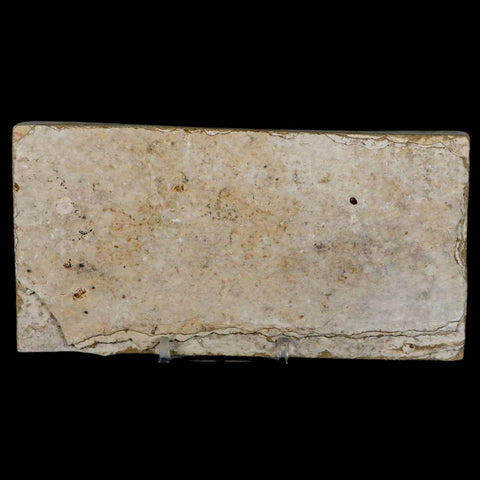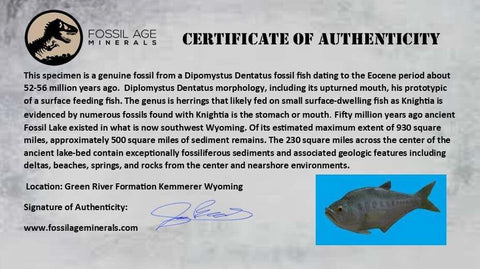2.8" Diplomystus Dentatus Fossil Fish Green River FM WY Eocene Age COA, Stand
Location: Kemmerer, Wyoming
Weight: 1 Pound 2.1 Ounces
Dimensions: 5.9 Inches Long, 3 Inches Wide, 0.8 Inches Thick (Plate)
Fish Dimensions: 2.8 Inches Long, 1.1 Inches Wide
Comes with a Free Stand.
Comes with a Certificate of Authenticity.
The item pictured is the one you will receive.
This is a genuine fossil.
56 million years old, Eocene age.
Diplomystus Dentatus morphology, including its upturned mouth, is typical of a surface-feeding fish. The genus is herrings that likely fed on small surface-dwelling fish, as Knightia is evidenced by numerous fossils found with Knightia in the stomach or mouth.
Around fifty million years ago, the ancient Fossil Lake covered much of present-day southwest Wyoming. While the lake once spanned up to 930 square miles, about 500 square miles of sediment remain preserved. Within the central 230 square miles, finely layered sediments rich in fossils and geologic features such as deltas, beaches, and springs are found. The lake’s unique chemical environment inhibited decay and scavenging, allowing millimeter-thick limestone layers to accumulate gradually. These laminated limestones harbor the densest concentration of fossil fish globally, providing an unparalleled Paleogene record of a freshwater lake ecosystem.
Since their stunning discovery in the 1870s, countless flawlessly preserved fossil fish have surfaced. Encased with these fish in the layered limestone lies an entire aquatic world: cyanobacteria, plants, insects, crustaceans like shrimp, crawfish, and ostracods, amphibians such as frogs and early salamanders, plus alligators, turtles, birds, and mammals—including the oldest pantolestid, an otter-like creature. The vibrant subtropical landscape surrounding the lake bursts to life through rare fossils: a horse, two snake species, lizards, bats, birds, an apatemyid (a tree-dwelling insectivore), a primitive carnivore called a minced, myriad insects, and over 325 kinds of leaves, seeds, and flowers.

Please be aware of the nature of fossils:
Being buried under the ground for millions of years under tons of pressure tends to be rough. No fossil comes out of the ground whole and perfect. Most fossils have undergone some restoration, while others are altered by man, simply to enhance their presentation in different ways. These are part of the natural beauty of the fossil and are not considered defects.


